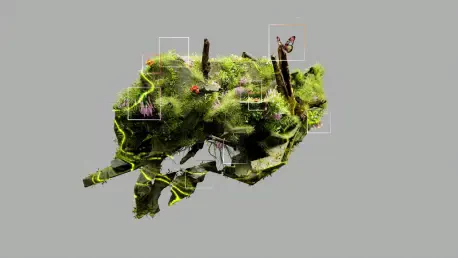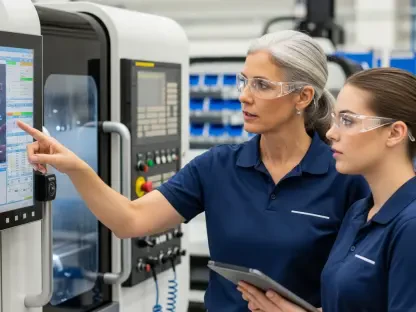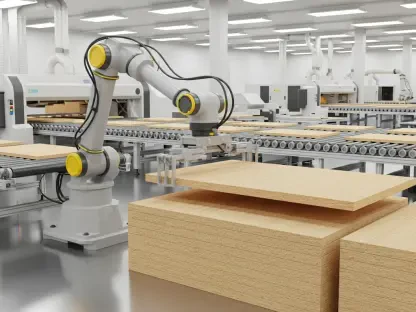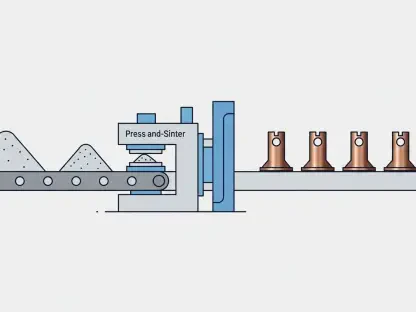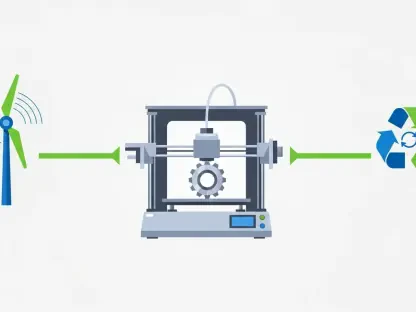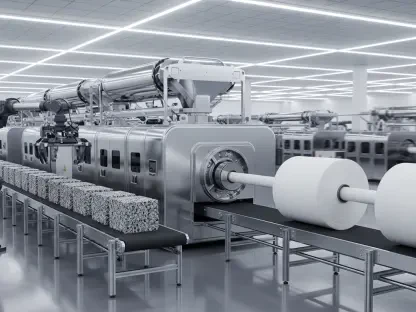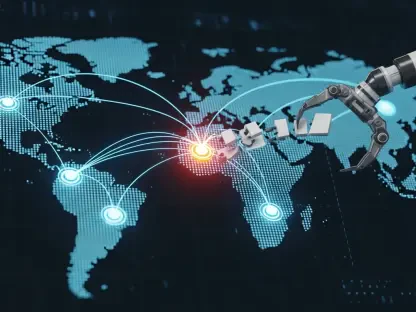What if the blueprint for a factory could come to life before a single machine is installed? Imagine an industrial space where every detail—from production lines to robotic movements—is perfected in a virtual realm, slashing costs and timelines with pinpoint accuracy. This isn’t a distant dream but a tangible reality crafted by Siemens and NVIDIA, two titans of technology who have joined forces to redefine manufacturing through artificial intelligence. Their collaboration, showcased at the NVIDIA GTC in Washington, D.C., unveils a transformative approach that promises to reshape how industries build and operate.
The significance of this partnership cannot be overstated in an era where manufacturing faces relentless pressure to innovate. With global supply chains demanding faster turnarounds and sustainable solutions, traditional factory design methods fall short. Siemens and NVIDIA address this gap head-on with a technology stack that leverages AI and digital twins—virtual replicas of physical systems—to simulate and optimize operations long before construction begins. This isn’t merely an upgrade; it’s a paradigm shift that could save billions in inefficiencies while meeting the urgent needs of a competitive market.
Virtual Factories: Building Before Breaking Ground
At the heart of this innovation lies the concept of constructing factories in a digital space first. Siemens and NVIDIA have developed a system where entire industrial setups are designed, tested, and refined virtually. Using advanced simulations, engineers can explore countless configurations in hours, a process that once consumed weeks of manual effort. This capability, integrated into the Siemens Xcelerator portfolio, ensures that every potential flaw is ironed out before any physical investment is made.
The technology goes beyond mere sketches, offering photorealistic visualizations through NVIDIA Omniverse. These detailed models allow stakeholders to see and interact with factory layouts as if they were real, enhancing decision-making at every stage. From adjusting conveyor belts to optimizing energy use, the virtual environment provides a sandbox for perfection, minimizing risks that often plague traditional builds.
This approach also extends to training robotics without physical hardware. By simulating production lines in a digital twin, companies can program and test automated systems with precision. Such foresight reduces downtime and costly errors when transitioning to real-world operations, setting a new standard for industrial planning.
Why AI in Manufacturing Is a Game-Changer
The urgency for AI-driven solutions in manufacturing has never been clearer. With industries grappling with rising costs and the need for rapid scalability, outdated methods hinder progress. Siemens and NVIDIA’s collaboration taps into this critical moment, delivering tools that streamline processes while addressing sustainability goals. Their technology promises to cut planning cycles by significant margins, with some simulations showing a reduction in design time by up to 60%.
Beyond speed, the focus on digital twins tackles a broader challenge: resource waste. Physical prototypes and trial-and-error phases often drain budgets and delay projects. By shifting these steps to a virtual platform, manufacturers can experiment endlessly without financial burden, ensuring that only the most efficient designs move forward. This shift aligns with global pushes for greener practices, as fewer resources are consumed in the planning stage.
Moreover, the ripple effect of this innovation touches every corner of the supply chain. Faster factory setups mean quicker product rollouts, giving companies a competitive edge in markets where timing is everything. As industries evolve, this technology positions early adopters at the forefront of a manufacturing revolution, ready to meet demands with agility and intelligence.
Inside the Siemens-NVIDIA Tech Stack
The backbone of this transformation is a powerful fusion of Siemens’ industrial automation expertise and NVIDIA’s graphical processing strength. Their joint tech stack, embedded in the Siemens Xcelerator portfolio and powered by NVIDIA Omniverse, redefines factory creation. Digital twins form the core, enabling engineers to build virtual factories that mirror real-world physics, allowing for simulations that predict outcomes with uncanny accuracy.
Visualization takes a leap forward with photorealistic rendering, turning abstract plans into vivid, interactive models. This feature empowers teams to spot inefficiencies or design flaws instantly, refining layouts without the guesswork. Whether it’s aligning machinery for optimal workflow or ensuring safety protocols, the clarity provided by these tools sharpens every decision from concept to completion.
Another standout element is the ability to train robotics virtually. Entire production sequences can be programmed and tested in a digital space, eliminating the high costs of physical trials. This not only saves time but also ensures seamless integration when systems go live, marking a significant departure from conventional, error-prone methods. Together, these components signal a new era where digital environments drive industrial strategy.
Leaders Speak: Vision for an Industrial Metaverse
Key voices from both companies underscore the transformative potential of this partnership. Peter Koerte, Chief Technology Officer at Siemens, paints a bold picture of an “industrial metaverse,” where factories of tomorrow are shaped by AI and virtual integration. His perspective highlights a future where digital and physical realms merge seamlessly, creating smarter, more responsive industrial hubs.
Echoing this sentiment, Rev Lebaredian, Vice President at NVIDIA, emphasizes the role of digital twins in virtual optimization. He positions NVIDIA Omniverse as a foundational platform, enabling manufacturers to simulate and refine operations with unprecedented detail. This shared vision reflects a commitment to pushing boundaries, ensuring that technology doesn’t just support but fundamentally reimagines industrial processes.
Their insights reveal a unified goal: to empower industries with tools that anticipate challenges before they arise. By blending AI with immersive environments, Siemens and NVIDIA aim to build a framework where innovation isn’t reactive but proactive, setting a benchmark for what factories can achieve in efficiency and intelligence.
Empowering Manufacturers with Practical Solutions
For businesses eager to adopt this cutting-edge technology, tangible benefits await. The Siemens-NVIDIA platform accelerates planning cycles dramatically, allowing factory designs to be tested and finalized in record time through AI-driven simulations. Manufacturers can explore multiple layouts virtually, identifying the most effective setups without the expense of physical mockups.
Cost savings extend to operational readiness as well. Training robotics and refining production lines in a digital twin ensures flawless execution when systems are deployed. This preemptive approach minimizes disruptions, enabling companies to hit the ground running with optimized workflows from day one, a critical advantage in fast-paced markets.
Continuous improvement also becomes a reality with data-informed tools. The technology supports ongoing monitoring and adjustments, eliminating manual inefficiencies and maintaining peak performance. For manufacturers, this translates to adaptability—staying ahead of demand fluctuations and operational hurdles through a system built for real-time insights and long-term gains.
Reflecting on a Milestone in Manufacturing
Looking back, the collaboration between Siemens and NVIDIA stood as a defining moment in industrial history. Their unveiling of a groundbreaking tech stack at the NVIDIA GTC marked the dawn of an era where factories were no longer bound by physical trial and error. Digital twins and AI-driven simulations became the new blueprint, transforming how industries approached design and operation with unmatched precision.
The impact lingered in the way manufacturers adapted to global challenges. By embracing virtual environments, companies found pathways to efficiency that were once unimaginable, cutting costs and timelines while meeting sustainability targets. This partnership paved the way for a smarter industrial landscape, proving that technology could solve age-old problems with fresh ingenuity.
As industries moved forward, the challenge remained to scale these innovations across diverse sectors. Exploring how smaller enterprises could access such tools, or how training programs could bridge the skills gap for AI integration, emerged as vital next steps. The legacy of this breakthrough was clear: manufacturing had entered a new frontier, and the journey to refine and expand its reach was just beginning.
